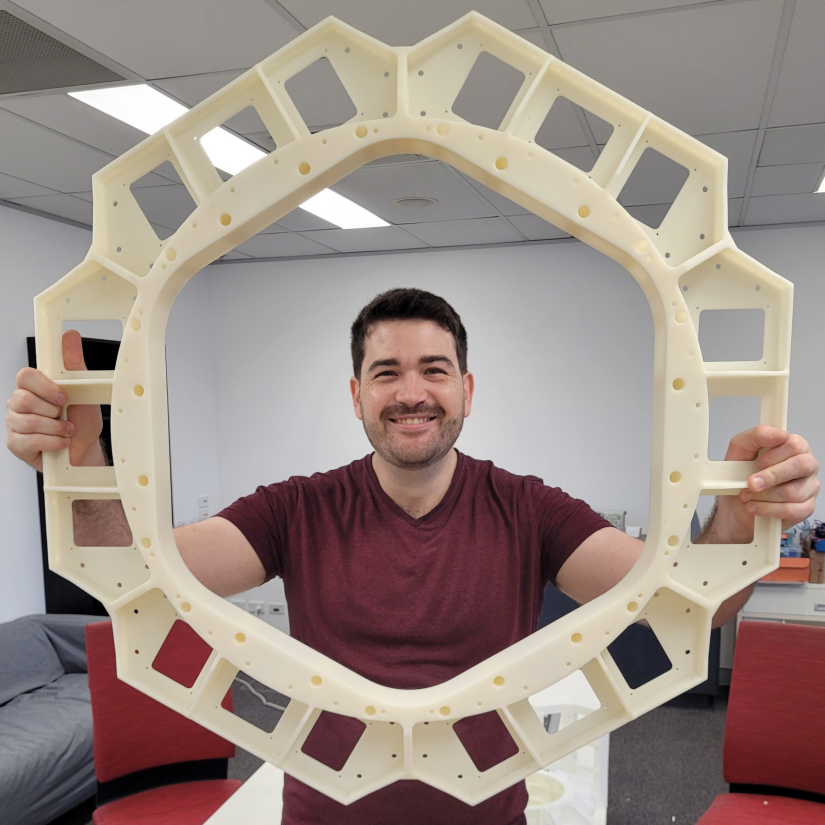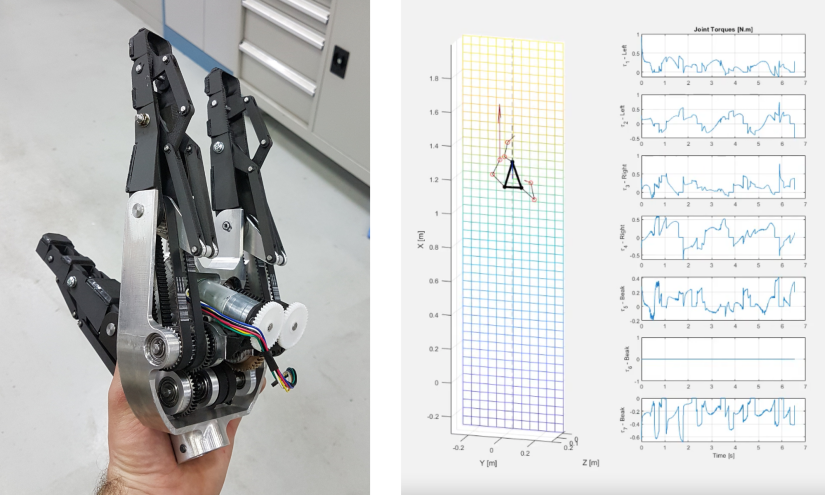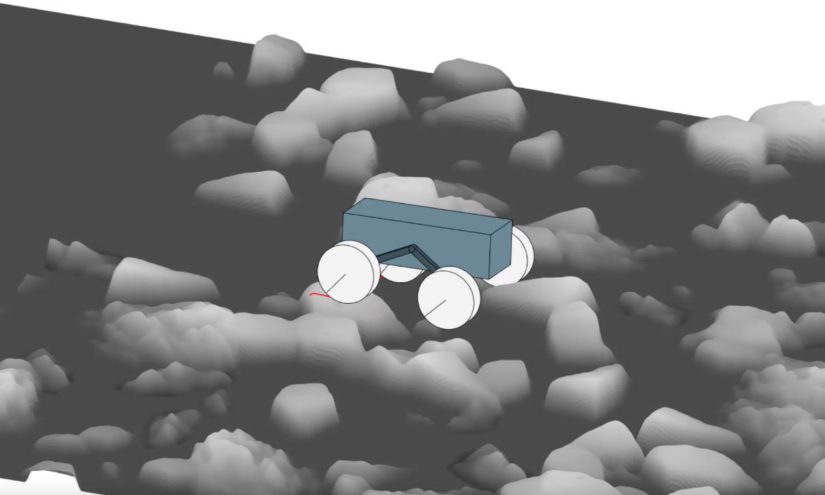A parrot-inspired PhD, NASA internship and building robots for space missions. Clyde Webster’s path has taken some unexpected turns. Find out what’s next for the up-and-coming engineer.

Image: supplied. Clyde Webster holding a full-scale prototype of the top plate of the Space Machines Company’s spacecraft upper bay.
Parrots and bio-inspired robotics
When Clyde finished his undergrad at UTS, he knew the nine-to-five grind wasn’t for him.
Drawn to the choose-your-own-adventure journey offered by a PhD, he’s now embarking on robotics research under the supervision of Robert Fitch. The problem they’re looking to solve? How to get maintenance robots into tall, complicated structures.
Clyde explains: “One day, I was sitting at a bus stop watching a bird hop around a bush and thought about how parrots live and climb high up in the trees. I realised there are a few novel things about the way they move that may be of interest to us in robotics, that hadn't been studied before.
“So I made my PhD about looking at how parrots climb structures, to pick out what lessons we can learn from them in their mechanics and control, and then applying that to robots.”

Images: supplied. Left: A prototype mechanically adaptable gripper for a robotic climber. Right: An early simulation of Clyde's parrot-inspired climbing robot with joint torques.
Since then, Clyde’s been creating simulations for a small three-legged climbing robot (mimicking a parrot’s beak and two legs) to determine how the robot moves.
Ultimately, he hopes to help transform civil infrastructure maintenance from something expensive and dangerous – think of sending a person up a tower with an angle grinder – to something more affordable, safe and reliable.
Journey into space
Already four years into his PhD in November 2020, in what Clyde describes as “a curve ball I didn’t really expect”, a NASA internship landed in his lap.
Following some fortuitous advice from his supervisor, Clyde reached out to William Reid, a Robotics Technologist from NASA’s Jet Propulsion Laboratory, to chat about his research.
“At the end of the discussion, he said, ‘If you ever want a graduate internship at NASA, just let me know.’ And I took him up on that.”
Last year, Clyde did a graduate internship with NASA working on lunar rovers. Working in simulation, he compared rover designs to see which worked best for missions in regions of the moon that don’t see the sun.

Image: supplied. During his internship with NASA, Clyde used MATLAB to compare robotic rover concepts on different terrain.
“It's a really interesting problem from an engineering perspective. It’s just inspiring, because it seems so intangible going up so high. Only a lucky few astronauts get launched into space, but through robotic instruments and measurements, engineers like me can sort of get there.”
Delivery service in space
For several years, Clyde’s been a familiar face at UTS Tech Lab – a multidisciplinary research facility that supports bespoke industry-led partnerships. Employed as a research engineer with the Robotics Institute, he’s worked on projects as varied as a wool-sorting device and a 3D cow scanner.
His work then caught the eye of the Space Machines Company, an industry partner also working at the Tech Lab.
Clyde’s joined the team as lead systems engineer for assembly integration and testing as they develop a transportation service for orbit. The service will enable the creation of new technologies and space services, such as communications and environmental monitoring.
“Most rockets deliver satellites to low-Earth-orbit. From there, they need their own system with propulsion on it to move, or they’re left wherever the rocket dumps them. Our spacecraft will take small satellites up on it and drop them where they want to be, or take them around on a full mission for up to five years.
"Space Machines Company has a launch planned for this year, and it's my job to put the spacecraft together, make sure all the electrical and mechanical systems integrate, and then test whole systems. It's ‘build it and break it’ engineering.”
Qualification tests see the spacecraft undergoing harsh conditions like those in space. They shake components at 15 times gravity, or blast 140 decibels of noise at them, or cycle temperatures between an arctic minus 70 degrees to a scalding 150 degrees.
But even though Clyde's reached great heights, his feet are still planted firmly in the ground. “It’s a huge learning curve. And it's still something I'm learning a lot about.”
Are you starting your studies in engineering? Clyde’s advice: Get involved in student projects, whether it’s the motorsports autonomous team, rocketry team or the new Australian rover challenge team. He loved his experience as team leader so much that he’s back as a mentor!

